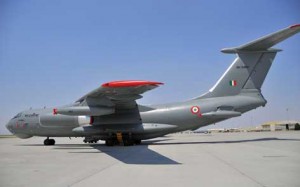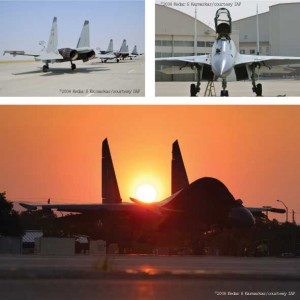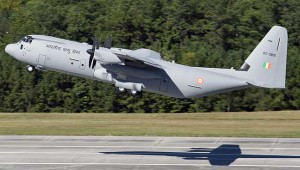Planning for the future has always been a daunting task, especially when it concerns the military of a nation. As the military is a vital component and in fact the ultimate instrument of national security, improper assessment or gross miscalculation of its pattern of development can have catastrophic ramifications. The task of forward planning is rendered particularly difficult in a scenario where long term plans need to be evolved in a coordinated fashion amongst the three wings of the Armed Forces – the Army, Navy and the Air Force. Also, for any long term planning to be meaningful, two inputs are prerequisites for military planners – a clear long term strategic vision for the nation, and assured availability of resources commensurate with national security imperatives, in that order.
In the Indian context, the lofty and fiery rhetoric on both these aspects emanating from the highest levels of governance have rarely crystallized into reality. Over the last six decades since Independence, in the Indian Air Force (IAF) there has been piecemeal acquisition of hardware as cleared by the civilian bureaucracy to be sanctioned by the political leadership on the basis of stand alone case-by-case justification and not in conformity with any long term national plan. Possibly there has been none. The process of acquisition of new equipment has generally followed a pattern of one to one replacement with equipment procured from a source that is either the cheapest, politically expedient or both. Acquisition of hardware has often been contingent not on the availability of resources but on allocation of funds.
Obsolescence In The IAF
For decades the IAF had largely been tethered to one non-western source. Much of the inventory acquired through this route has now been overtaken by obsolescence. As a result, in recent years, there has been an alarming erosion in combat power and other capabilities. Even after prolonged and reportedly vigorous effort, the indigenous Research & Development Organisations and the Aerospace Industry have not been able to provide a respectable degree of self reliance to the IAF. The near total dependence on foreign sources for cutting edge technology and frontline equipment is potentially perhaps the most debilitating factor that often threatens to seriously undermine the capability of the IAF.
 Despite the limitations, the IAF has managed to attain and project an image of a potent force capable to preserving the sovereignty of the Indian skies and in more recent times, to project power albeit limited in quantum and reach. And even in the future there appears to be no option but to procure advanced technology and hardware from abroad. There is however an attempt to indigenize products through co-development, co-production and the difficult, but innovative, concept of “Offsets”. Though not the best, this route is the most expedient under the circumstances to accord military hardware a semblance of Indian character.
Despite the limitations, the IAF has managed to attain and project an image of a potent force capable to preserving the sovereignty of the Indian skies and in more recent times, to project power albeit limited in quantum and reach. And even in the future there appears to be no option but to procure advanced technology and hardware from abroad. There is however an attempt to indigenize products through co-development, co-production and the difficult, but innovative, concept of “Offsets”. Though not the best, this route is the most expedient under the circumstances to accord military hardware a semblance of Indian character.
Life of a modern weapon system is in the region of thirty years which is normally extendable by another 10 to 15 years after a mid-life upgrade. New equipment procured for the IAF over the next decade will remain operational up to 2050 at the very least, possibly up to 2060. As the nature of warfare itself is undergoing transformation, it is necessary to make a comprehensive reassessment of the contours of the operational scenario that the IAF will have to contend with and reconfigure its inventory accordingly. To do this at this point in time, the IAF needs to take note of India’s regional power status in the emerging world order and assess its possible role and responsibility in the new geopolitical and geostrategic environment.
The Pakistan Factor
In view of the asymmetry, Pakistan is unlikely to take the initiative for large scale conventional military operations against India. While it will continue to retain the capability to put up stout defence against any assault, as indications are, it is more likely to engage in clandestine warfare against India in a variety of ways, some of which were amply demonstrated by way of attack on the Parliament in 2001 or the raid on Mumbai in November 2008. Such operations should no longer be seen as purely internal security problems.
Our land and sea borders are extensive and quite impossible to seal through measures on the ground – such as erection of physical barriers or through the deployment of paramilitary forces/civil police that are riddled with porosity on account of corruption. In the present scenario, it is relatively easy for the well trained enemy agents or commandos collectively described by India as “terrorists”, to penetrate unsecured borders and inflict disproportionately high levels of damage and human casualties. It should not come as a surprise if the various religious, political and social divides that afflict the nation actively facilitate such operations by the enemy.
 Despite the perceived success in the recently held elections in the State of Jammu and Kashmir, the end to the turmoil is not in sight. There is no doubt that Pakistan will continue its campaign in the state, in all likelihood, with renewed vigour and intensity to turn the tide against India. The techniques of warfare and tactics adopted by Pakistan in J&K will be similar to those employed by other regions in India and possibly with an enhanced level of support from the local populace.
Despite the perceived success in the recently held elections in the State of Jammu and Kashmir, the end to the turmoil is not in sight. There is no doubt that Pakistan will continue its campaign in the state, in all likelihood, with renewed vigour and intensity to turn the tide against India. The techniques of warfare and tactics adopted by Pakistan in J&K will be similar to those employed by other regions in India and possibly with an enhanced level of support from the local populace.





